Back in the day, this stream was quite shallow and people used to hire boat trackers - really boat HAULERS - to pull them upstream in sampans. Nowadays, what with the rise in the local water level, things are a lot different.
Our excursion began with a one-hour ferry ride upstream, through the usual stunning scenery. (It's terrible how blase I'm becoming about the natural beauty here!) The ferry had seating on the main floor
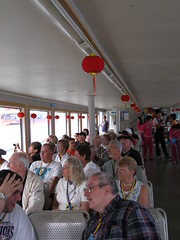
and we had a great view of the Princess Elaine as we pulled away:

The ferry also had an observation deck on top, where I spent most of my time.

The best views were either dead ahead or dead astern, but I spent most of the time looking behind owing to the fact that the front view was marred by several boat-related structures
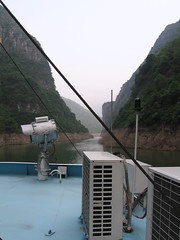
that I'm sure were necessary, but *really!*
It was a beautiful day, though hot and SUNNY and hazy, and the narrowness of this gorge by comparison to the main Yangtze gorges just made it look even more spectacular:
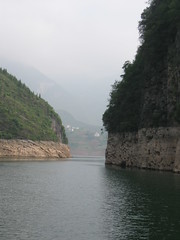
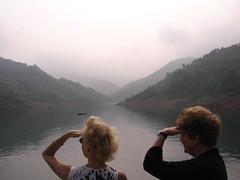
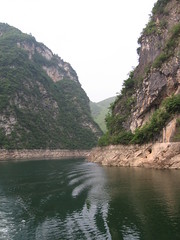
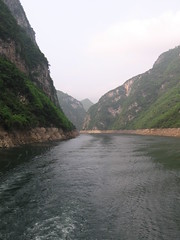
They let the water level rise a bit in winter; that's why there is that "scar" about 10 meters up the wall of the gorge all through here.
In some of the cliff sides you can see caves or niches that contain a "hanging coffin" (click pictures for a bigger view.)
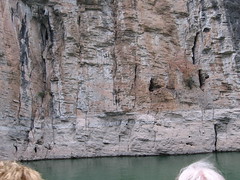

These things are ancient - somewhere in the 2000 year range, with one estimate as old as 475-221 BC - and (depending on who you talk to) show a belief that if you are buried up high you are closer to heaven, or maybe a belief that if you are buried up high your body is less likely to get washed downriver in the next monsoon. A lot of hanging coffins in these mini-gorges are being flooded out by the rising Three Gorges Dam water, and there's a big effort to conserve them before the high water gets them. They tell us that this one is probably high enough not to get flooded out when the dam is complete. I'm not sure, but I think this cliff cave
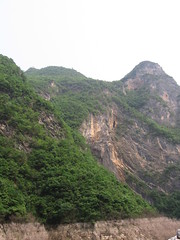
may have a coffin sticking out of it too - waaaaay up there - what do you think?
We also passed an enormous cave
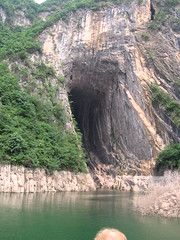
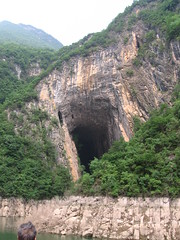
big enough to sail a boat into. Near there, I saw some golden monkeys swinging in the trees, though they were far too quick for me to get any pictures.
Shortly after the cave we arrived at a halfway point where we left the ferry for sampans
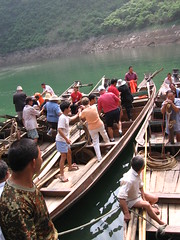
rowed by six strong trackers who took us a couple of kilometers farther up stream. The Shennong Stream is a national wildlife preservation area; the area is thinly populated and much less polluted than in the Yangtze proper, so being so close to the water was pleasant rather than icky.
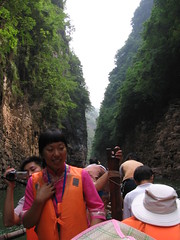
Our trackers staged a race with the other sampans in our group, resulting in some wild splashing:
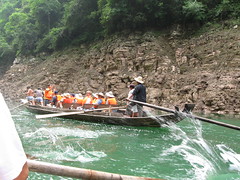
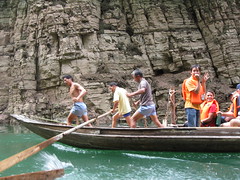
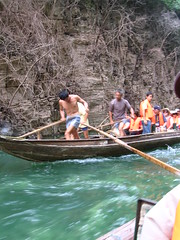
We won.
Through most of this section, the water is very deep - as much as 20 or 30 meters - due to flooding, but we eventually arrived at a point where the water became too shallow to scull
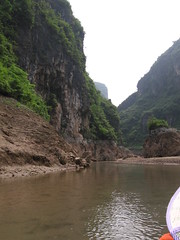
and the trackers hopped off the boat to pull us through the shallows in the good old fashioned way.
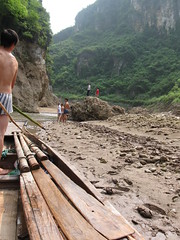
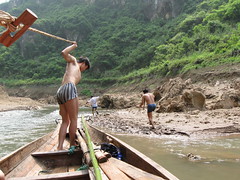
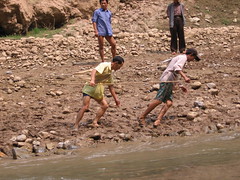
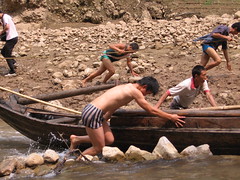
There are some historical photos (our guide showed them to us with great enthusiasm) of trackers, stark nekkid but for sandals, hauling boats early in the 20th century; our modern trackers used the same handmade ropes
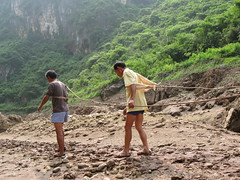
and homemade sandals,
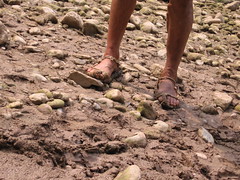
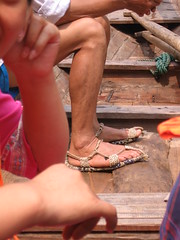
although they did concede to wear shorts.
These boat crews are no fools: they only towed the sampans a few hundred yards, just enough to give us a taste of what it would have been like. Then they pulled the sampans over to the side and turned them around, taking us back downstream to the embarkation station where we reboarded the waiting ferry. But not before I looked around the gift shop there, and found - ta daa! - GOLDFISH-EMBELLISHED CHOPSTICKS FOR MY BUDDY ROBERT! Finally! Something! Yippee!
Earlier, our sampan guide Daisy told us that it's a plum job getting to do the boat tracker gig, because it's one of the few chances these folks have to get hold of any cash. There are so many tracker teams looking for the work that they take turns: each team gets to work perhaps every nine days or so. On the ferry ride back to the Princess Elaine, we passed the sampan crews on their own way home:
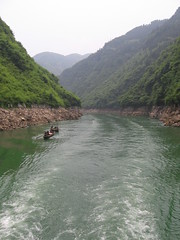

No comments:
Post a Comment